In the middle of Lunar New Year’s celebrations, the Chinese Historical Society of New England (CHSNE) held its second in a series of 20th anniversary lectures in late January. We invited Columbia University Lung Family Professor of Asian American Studies and Professor of History, Mae Ngai, to lecture about her research in connection with the Tape Family, a three-generation Chinese American family chronicled in her book, The Lucky Ones: One Family and the Extraordinary Invention of Chinese America.
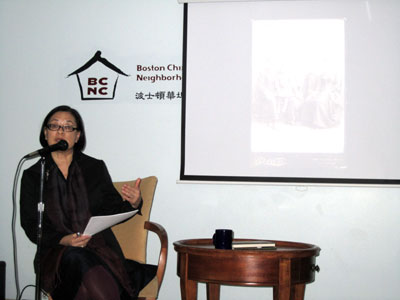
Speaking to a packed audience in space provided by Boston Chinatown Neighborhood Center, Dr. Ngai fascinated us with stories of this early middle class Chinese American family who because of their knowledge of English were able to hold jobs as immigration brokers, interpreters, and servants rather than the typical Chinese laborer occupations such as restaurant or laundry workers.
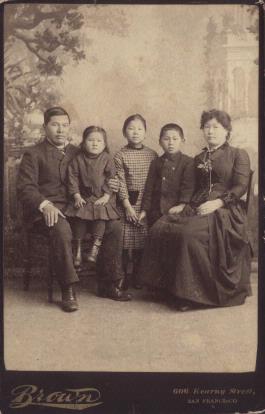
The Tape family (Joseph, Emily, Mamie, Frank, Mary), 1884
The Tape family is legendary in Asian American history because seven-year-old Mamie Tape was the plaintiff in a landmark civil rights case in 1885 charging the San Francisco public schools with racial discrimination. The case mandated that San Francisco must provide schooling for Chinese American children.
Dr. Ngai showed us historic photos of this unusual Chinese American family dressed in elaborate Western attire, typically worn by wealthy individuals at the turn of the last century. She explained that the family generally wore Western clothes and dressed in Chinese clothes when posing for photos at Chinese school or other special events where they were expected to exhibit their Chinese-ness.
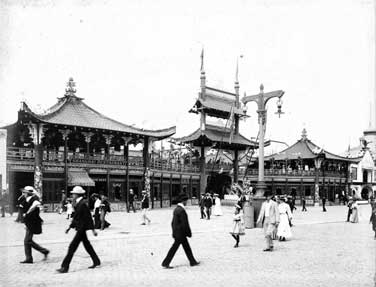
Dr. Ngai also recounted how members of the Tape family helped to create exhibits at the 1904 St. Louis World’s Fair where they introduced Westerners to Chinese culture. They invented a Chinese Village pavilion featuring ‘200 Natives from the Celestial Empire’ including the Chinese Museum, the Chinese Theatre, the Chinese Wedding, the Chinese Restaurant, the Chinese Tea Garden, and the Chinese Stores. Adults could be entertained by all of this for an admission price of 25 cents.
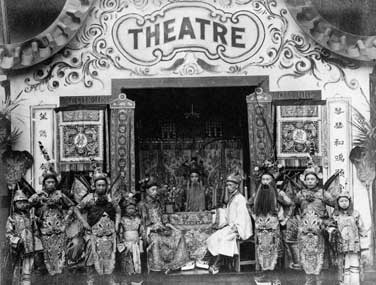
These stories reminded us of growing up in the US in the 1960s & 1970s when our parents made us wear Chinese jackets at New Year’s and asked us to say Happy New Year (Gong Hay Fat Toy or Xin Nian Kuai Le) in our dialect of Toisanese or Mandarin, in order to receive red envelopes of money (hong bao). The rest of the year, we didn’t want to wear Chinese clothes at all while our parents lived in fear that we would lose our Chinese identity if we didn’t at least say Gong Hay Fat Toy or Xin Nian Kuai Le once a year.
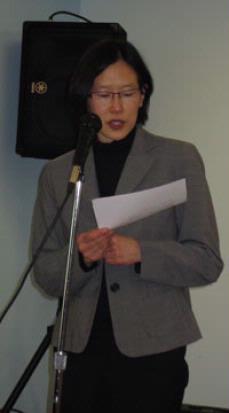 Shauna Lo (left), CHSNE Board Member & Assistant Director of the Institute for Asian American Studies at UMass Boston, moderated the event.
Shauna Lo (left), CHSNE Board Member & Assistant Director of the Institute for Asian American Studies at UMass Boston, moderated the event.
Next event in the CHSNE 20th anniversary series includes:
May 5th CHSNE Open House (1-3 pm, 2 Boylston St, Suite G-3, Boston)
Photos: 1904 images of the Chinese Village at the Saint Louis World’s Fair, courtesy of the Saint Louis Public Library. All others are courtesy of the Chinese Historical Society of New England.


